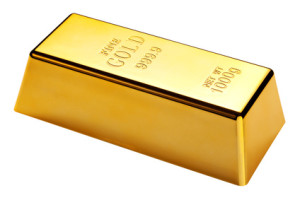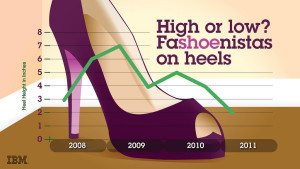As Coco Chanel once said, the number one rule for a lady is to “keep your heels, head, and standards high.”
…. but which ‘standard’ was she talking about?
Using fashion trends as economic indicators is not a new concept. In fact, economists have been using them in conjunction with the ‘retail sales index’ for many years. It began in the 1920s with George Taylor’s hemline theory, as he speculated that women wore shorter skirts as way to show confidence during strong economic periods. The trend then transitioned to lipsticks, when after 9/11 Estee Lauder suggested that the sharp increase in their sales was a direct response from women who were using impulse spending as a way to cope and grieve. More recently, however, economists have been using the “high heel index” as a way to measure consumers confidence in the economy.
While measuring the height of a heel may seem ridiculous, a recent recent study by IBM suggests that there is a strong correlation between the height of one’s shoe and the success of the economy. Their report comes as a result of an in-depth social media analysis, where researchers tracked trends and posts about shoes across the internet to understand what types of heels women were wearing and how high they were.
According to the report, heel heights have traditionally increased during harsh economic times, as fashion is used as a form of escapism and expression. However, more recent data indicates that this trend may be “last season”. In 2009, shoe manufacturers and retailers were reporting that they were selling more lower height heels and flats in their store. Since this was still during the recession, IBM analysts theorized that there must be a shift taking place with consumers. By wearing lower heels, were women saying that no longer felt the need to be showy or ostentatious? Or were they just trying to be more comfortable on their walk to work?
Although there is no perfect answer or way to measure the index, it is clear that economists can gain tremendous insight about our economy and consumer confidence by looking at even the most commonplace things.


Leave a Reply
You must be logged in to post a comment.